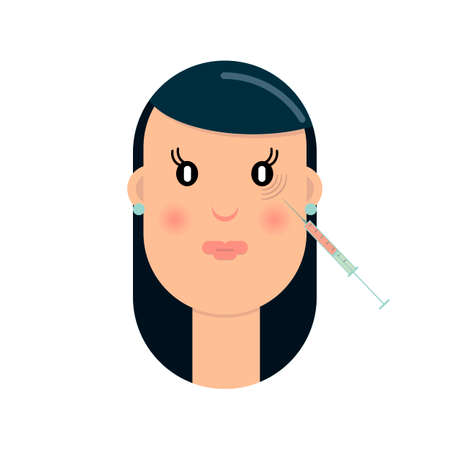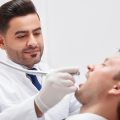1. Understanding Radiofrequency Skin Tightening
Radiofrequency (RF) skin tightening has become an increasingly popular non-surgical cosmetic treatment across the UK, offering a modern solution for those seeking to rejuvenate their appearance without going under the knife. At its core, RF skin tightening uses controlled radiofrequency energy to gently heat the deeper layers of the skin. This targeted warmth stimulates collagen production and encourages tissue remodelling, resulting in firmer, smoother, and more youthful-looking skin over time.
The appeal of RF treatments among British patients is rooted in both science and convenience. Unlike invasive procedures, RF skin tightening typically requires little to no downtime, allowing individuals to resume daily activities swiftly—an important consideration for busy lifestyles common throughout the UK. Moreover, the technology is suitable for various skin types and areas of concern, including the face, neck, and body, making it an accessible option for a broad range of people.
The popularity of RF skin tightening in the UK has also been fuelled by a growing cultural emphasis on natural-looking enhancements. British patients often value subtle improvements that maintain authenticity rather than dramatic changes. RF treatments align well with these preferences by offering gradual, noticeable results that enhance one’s features without appearing overdone. As awareness spreads and technology advances, more clinics throughout Britain are adopting this method as a staple in their aesthetic offerings.
2. Initial Consultation and Patient Assessment
In the UK, the initial consultation is a crucial stage in the patient journey for radiofrequency (RF) skin tightening treatments. This step is where clinics begin to build a trustworthy relationship with each patient by conducting comprehensive assessments and transparent discussions. During this phase, practitioners focus on understanding the patients aesthetic goals, evaluating medical suitability, and managing realistic expectations in line with British standards of care.
Understanding Patient Goals
The consultation typically starts with an open conversation about the patients motivations and desired outcomes. Practitioners in UK clinics are trained to listen attentively, asking thoughtful questions that help clarify what the individual hopes to achieve—whether it is firmer skin on the face, neck, or body, or subtle rejuvenation without surgery. This approach ensures that patients feel heard and respected, fostering a collaborative atmosphere.
Assessing Suitability for RF Skin Tightening
A thorough assessment follows, where clinicians evaluate both the patients skin condition and overall health. The table below outlines typical factors considered during this evaluation:
| Assessment Factor | Purpose | UK Clinic Approach |
|---|---|---|
| Skin Type & Condition | Determine if RF technology will be effective and safe | Visual examination and sometimes digital imaging |
| Medical History | Identify contraindications such as pacemakers or recent surgery | Detailed questionnaire and verbal discussion |
| Lifestyle Factors | Understand habits that may affect results (e.g., smoking) | Sensitive but direct questioning, respecting privacy |
| Expectations & Motivations | Align realistic outcomes with patient hopes | Candid explanation of achievable results based on clinical experience |
Addressing Health History & Contraindications
An integral part of the assessment is exploring the patient’s health history. UK clinics adhere strictly to safety protocols, enquiring about relevant conditions such as autoimmune diseases, metal implants, pregnancy status, and medications. This diligence minimises risk and demonstrates duty of care—a core tenet in British medical practice.
Managing Expectations: A Transparent Approach
The final aspect of the initial consultation involves setting clear expectations. Clinicians explain how many sessions may be needed, what results can reasonably be expected based on clinical evidence, and any potential side effects. Patients are encouraged to ask questions, ensuring they leave with all necessary information to make an informed decision. This transparency not only upholds ethical standards but also helps prevent dissatisfaction later in the treatment journey.

3. Preparation Before the Procedure
Embarking on a radiofrequency skin tightening journey in the UK involves several essential steps before the actual procedure, and local practitioners are meticulous about ensuring patients are well-prepared. Here’s what you can expect during this stage of your experience.
Initial Consultation and Tailored Advice
Your practitioner will typically begin with an initial consultation to assess your skin type, discuss your goals, and review any relevant medical history. In the UK, it’s common for clinics to provide bespoke guidance—this may include evaluating your current skincare regimen and recommending adjustments where necessary. Expect clear communication regarding what the treatment can realistically achieve for your specific needs.
Skincare Routine Adjustments
British practitioners often advise patients to adopt a gentle skincare routine in the days leading up to their appointment. This usually means avoiding harsh exfoliants, retinoids, or active acids that could sensitise the skin. Many clinics recommend using a mild cleanser, hydrating moisturiser, and SPF as part of a simplified daily routine to ensure your skin is calm and healthy prior to treatment.
Considerations for Sun Exposure
Given the unpredictable British weather, sun exposure might not always be top of mind. However, most clinics strongly advise minimising sun exposure for at least one week before the procedure—even during overcast conditions. Patients are encouraged to use broad-spectrum sunscreen (SPF 30 or higher) and wear protective clothing when outdoors to prevent increased sensitivity or risk of pigmentation changes post-treatment.
Typical Pre-Procedure Instructions
In addition to skincare and sun precautions, UK practitioners may provide further instructions tailored to their clinic’s protocols. These often include: arriving with clean, make-up-free skin; avoiding tanning beds and self-tanning products; steering clear of alcohol consumption for 24 hours pre-procedure; and disclosing any recent cosmetic treatments or medications. Following these local guidelines helps ensure optimal safety and results from your radiofrequency skin tightening session.
4. Day of the Treatment: What to Expect
On the day of your radiofrequency (RF) skin tightening treatment in the UK, it’s natural to feel a mix of anticipation and curiosity about what lies ahead. This section offers a detailed walkthrough so you can step into your chosen clinic feeling fully prepared and reassured.
Arrival at the Clinic
You’ll typically be welcomed by a receptionist who will confirm your appointment and guide you through any necessary paperwork, such as consent forms or a quick health check questionnaire. British clinics often pride themselves on punctuality, but it’s wise to arrive 10-15 minutes early to settle in and have any last-minute queries addressed.
The Pre-Treatment Consultation
Before proceeding, you’ll meet with your practitioner for a brief consultation. They’ll review your medical history again, answer any questions, and discuss your goals. In true British fashion, expect a respectful and confidential environment where your comfort is prioritised. You may also be shown before-and-after photos from previous UK patients to set realistic expectations.
Comfort Measures and Preparation
| Step | Description |
|---|---|
| Skin Cleansing | Your skin will be thoroughly cleansed to remove oils, makeup, or skincare products. |
| Marking Treatment Areas | The practitioner may use a cosmetic pencil to mark specific areas for targeted RF delivery. |
| Application of Gel/Cooling Agent | A conductive gel is applied to enhance device glide and protect your skin’s surface. |
| Pain Management Options | If needed, a topical numbing cream can be offered—though most British patients report only mild warmth or tingling during the procedure. |
The Radiofrequency Procedure: Step-by-Step
- Positioning: You’ll be asked to sit or lie comfortably, depending on the treatment area. Clinics in the UK often provide extra pillows or blankets for added comfort.
- Device Application: The practitioner glides the RF handpiece over marked areas in slow, methodical passes. You may hear soft beeps or feel gentle heat building beneath the skin—this is normal and signals collagen stimulation is underway.
- Continuous Monitoring: Your comfort will be checked regularly. If you experience discomfort beyond expected warmth, let your practitioner know immediately; adjustments can be made swiftly.
- Completion: Once all areas are treated (usually 30–60 minutes), excess gel is wiped away and soothing products may be applied.
What UK Patients Typically Report During Treatment
| Sensation | Description |
|---|---|
| Mild Warmth | The most common sensation, akin to a warm stone massage. |
| Tingling | Slight tingling or prickling under the skin, generally well-tolerated. |
| No Pain | The majority of British patients do not require anaesthesia; discomfort is rare and short-lived if present. |
Post-Treatment Advice Before Departure
Your practitioner will offer aftercare guidance tailored for UK weather conditions—such as advising on sun protection even during cloudy days—and ensure you’re comfortable before leaving the clinic. Many patients appreciate a cup of tea or water before heading home, reflecting the classic British emphasis on hospitality and wellbeing.
5. Post-Treatment Care and Recovery
Best Practices in Aftercare
After completing a radiofrequency skin tightening session, UK practitioners strongly emphasise a careful and consistent aftercare routine to maximise results and minimise discomfort. Patients are typically advised to keep the treated area clean, avoid harsh skincare products, and steer clear of direct sun exposure for at least 48 hours. Applying a gentle, fragrance-free moisturiser can soothe any temporary redness or sensitivity. For those with sensitive skin, using thermal spring water sprays is a popular British tip to calm irritation.
Advice from UK Practitioners
Leading UK aesthetics clinics recommend avoiding strenuous exercise, hot showers, saunas, and swimming pools for the first day following treatment. It is also wise to refrain from applying makeup directly after the procedure—most experts suggest waiting at least 24 hours before resuming your usual cosmetics routine. Drinking plenty of water and maintaining a healthy diet can further support the skin’s natural healing process, as highlighted in many NHS-endorsed guidelines.
Expected Downtime
One of the main draws of radiofrequency skin tightening in the UK is its minimal downtime. Most patients experience mild redness or swelling which usually subsides within a few hours. Some may notice slight tenderness or a warm sensation on the skin for up to 24 hours. Rarely, minor bruising can occur but typically resolves quickly without intervention.
Addressing Common Questions About Post-Procedure Effects
It is quite common for patients to worry about possible side effects or complications after their session. UK practitioners reassure that adverse reactions are rare when the treatment is carried out by qualified professionals. If you experience prolonged redness, severe pain, or blistering—which are extremely uncommon—it is important to contact your practitioner promptly. Most questions revolve around how soon one can return to work or social activities; generally, most people feel comfortable resuming normal routines almost immediately. For peace of mind, always follow your clinic’s personalised aftercare instructions and reach out with any concerns during your recovery journey.
6. Follow-Up Appointments and Long-Term Results
Understanding the UK Clinic Follow-Up Protocols
After completing your initial radiofrequency skin tightening session, reputable UK clinics will schedule follow-up appointments to monitor your progress and ensure optimal results. Typically, the first follow-up takes place within 2-4 weeks of the initial procedure. During this visit, practitioners assess your skin’s response, address any concerns, and recommend further sessions if required. It’s common for clinics to offer a series of treatments—often spaced 4-6 weeks apart—to maximise collagen stimulation and achieve the best outcome. British clinics emphasise transparency; you’ll receive a personalised treatment plan tailored to your skin type and goals.
Timelines for Visible Results
While some patients may notice subtle improvements immediately after treatment, most visible changes in skin texture and firmness develop gradually over several weeks. Collagen remodelling is not instantaneous—UK practitioners advise that peak results typically manifest between 8-12 weeks post-treatment. This timeline aligns with the natural regeneration cycles of the skin, making it important to set realistic expectations and avoid comparing outcomes with instant-fix solutions often promoted online.
Maintenance Advice for British Lifestyles
For long-term benefits, ongoing maintenance is essential. Clinics commonly recommend top-up sessions every 6-12 months, depending on individual needs and lifestyle factors. In the UK context, where seasonal changes and central heating can impact skin hydration, practitioners stress the importance of a robust skincare routine: daily SPF use (even during cloudy British weather), regular moisturising, and avoiding excessive sun exposure during rare spells of strong sunshine. Additionally, many British patients lead busy lives; thus, clinics often offer flexible scheduling or weekend appointments to accommodate work commitments.
Staying Engaged with Your Practitioner
Open communication with your practitioner remains key throughout your journey. If you experience unexpected side effects or have questions about maintaining results at home—perhaps regarding suitable products for sensitive British skin—don’t hesitate to reach out for advice. Most clinics provide email or phone support between visits, ensuring you always feel supported as you continue your journey towards firmer, healthier-looking skin.

